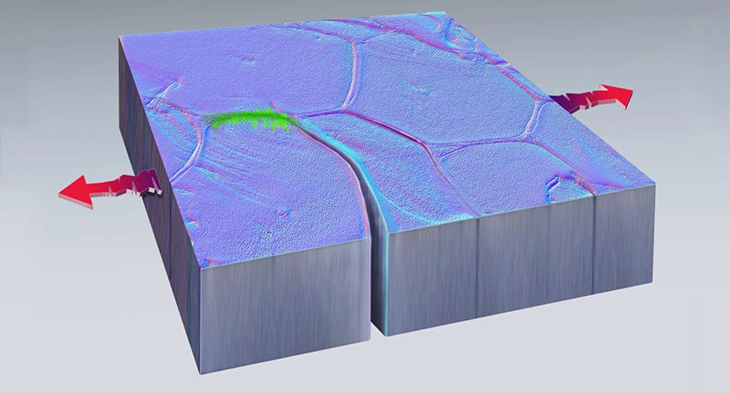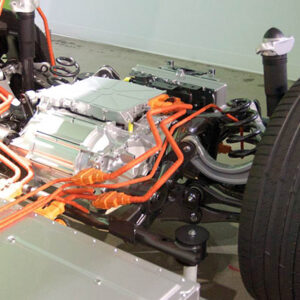
For the very first time, scientists were able to witness metal fragments spontaneously cracking and then rejoining without any human intervention. This is a revelation that completely challenges fundamental scientific theories that have been in place for years.
This groundbreaking discovery holds the potential to revolutionize engineering, paving the way for self-healing engines, bridges, and airplanes that can reverse the damage caused by wear and tear, ultimately enhancing their safety and lifespan.
The study findings, which were published in the journal Nature, were conducted in a joint effort by teams from Sandia National Laboratories and Texas A&M University.
As per Sandia materials scientist, Brad Boyce, in Sandia National Laboratories’ news release, “This was absolutely stunning to watch first-hand.”
He adds, “What we have confirmed is that metals have their own intrinsic, natural ability to heal themselves, at least in the case of fatigue damage at the nanoscale.”
The phenomenon under examination occurs due to the repeated stresses or movements endured by the metallic components of machinery, which over time develop microscopic cracks. Gradually, these fissures expand and propagate until they lead to the complete failure of the device.
The actual crack that was observed by Boyce and his team was one of these minuscule yet consequential fractures, measured only in nanometers.
Boyce said, “From solder joints in our electronic devices to our vehicle’s engines to the bridges that we drive over, these structures often fail unpredictably due to cyclic loading that leads to crack initiation and eventual fracture. When they do fail, we have to contend with replacement costs, lost time and, in some cases, even injuries or loss of life. The economic impact of these failures is measured in hundreds of billions of dollars every year for the U.S.”
Despite sounding like something out of science-fiction, self-healing is something that has occurred thousands of years before. In fact, the Romans figured out that making concrete with particular ingredients, such as lime clasts, give it the ability to heal itself over time.
In recent years, a group of engineers from the University of Illinois also discovered how to develop self-healing lithium-ion batteries using polymer-based electrolyte that doesn’t form harmful lithium dendrites that have the ability to cause shorting and explosions.
Currently an associate professor at the University of Tennessee, Knoxville, Khalid Hattar, and an employee of the Department of Energy’s Office of Nuclear Energy, Chris Barr, spearheaded the experiment at Sandia when the discovery was made.
Although they only meant to evaluate how cracks formed and spread through a nanoscale piece of platinum using specialized electron microscope techniques, something they had developed to repeated pull on the ends of metal at least 200 times per second.
However, around 40 minutes into the experiment, the damage actually reversed its course. As if it was retracing its steps, one end of the crack fused back together, leaving no trace of the original injury. As time passed, the crack regrew in another direction.
According to Hattar, he called this phenomenon an “unprecedented insight.”
Despite this breakthrough, the engineers explain that there is still a lot that remains unknown regarding this self-healing process, such as whether it is will become a practical tool in a manufacturing setting or not.
“The extent to which these findings are generalizable will likely become a subject of extensive research. We show this happening in nanocrystalline metals in vacuum. But we don’t know if this can also be induced in conventional metals in air,” Boyce said.
Regardless of all the unknowns, this discovery marks a significant leap forward in the field of materials science.
What are your thoughts? Please comment below and share this news!
True Activist / Report a typo


